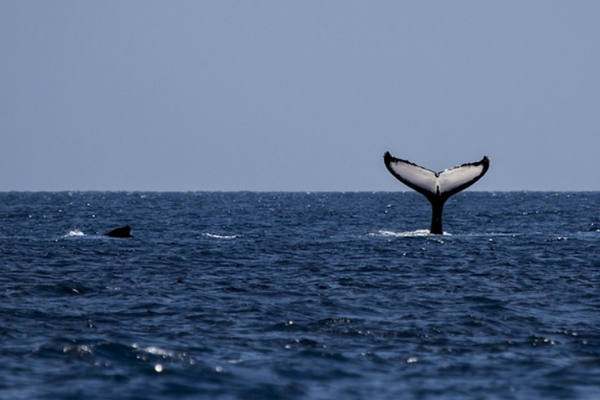Individual change in times of social crisis: Fisher’s Personal Transition Curve
In Spain... advice was given about washing hands more regularly, and then suddenly the whole country was put under a kind of house arrest with no exceptions made even for taking exercise. The psychological adjustment required for this has been immense...
This coronavirus lockdown is my second period of living through a government’s decision to force people to stay in their homes. My first experience was in Egypt during the Arab Spring when Hosni Mubarak’s regime imposed up to 17 hour curfews on its people. Clearly there are major differences between curfews imposed by an undemocratic government trying to clear protesters off the street and one that is democratically elected trying to handle a global pandemic as I am experiencing here in Spain. However there are also similarities, in particular with regards to how individuals manage the inevitable change that takes place within them as they have to learn to adjust to new realities. One really useful model I found to understand my psychological reactions to events in Egypt, which is helping me once again now during Spain’s coronavirus lockdown, is John Fisher’s Personal Transition Curve.
I first came across this change management model many years ago whilst undertaking a vocational qualification in management when I worked in the public sector. It is often used by managers who are considering how to help their staff through times of organisational change. However, it became of great personal use in comprehending my own response to the Egyptian revolution in 2011. As is the case with the coronavirus lockdown imposed a few weeks ago here in Spain, the events of the Arab Spring snowballed, allowing almost no time for mental preparation for the restrictions we would be living under for many months. Back then, in the midst of the protests, the teargas, the distant sound of gunfire, the looting and the vigilantes on the street, my emotional reactions to what was going on were unreflective and it was only afterwards that I made use of Fisher’s model to understand what I had been through. This time, with the pandemic, I have been better prepared for the impact on my mind of a period of confinement and I have been able to observe my emotions during this lockdown in relation to the Transition Curve.
Fisher’s model suggests that individuals passing through a period of change will experience a series of psychological stages. These are anxiety, happiness, fear, threat, guilt, and depression and they are driven by our internal need to adapt our deeply held beliefs and habitual behaviours to our changing circumstances, a psychological process that is generally not easy. Whilst some of the stages might be passed through very quickly, it is believed that we do actually experience each one, even if unconsciously, and that we do so in the order Fisher suggests in the model. It is also possible, particularly in a change as momentous as people are experiencing at the moment suddenly confined to their homes, that we can at times revert back to a previous stage. So whilst we might have moved onto anger for a while, at some point we could return to a period of fear.
One problem for people experiencing momentous change such as this coronavirus crisis is that every individual is going through the stages at different times and at different speeds. This is almost certainly true for the way men and women pass through the stages, and it can also be true for natives of a country compared to foreigners whose different support networks and greater awareness of what is happening elsewhere in the world provide other perspectives on events. Although one person may be feeling fear, those around them might have moved onto anger, and this can cause conflict because people struggle to understand how another person is experiencing the situation in a different way to them. In Egypt I found myself stuck in intense fear for a lot longer than people around me, many having moved onto feeling a strong sense of anger which, as often happens, could be directed outwards at others. A person’s ability to handle each of the emotional stages also appears to rely on their past experiences. If a person has gone through periods of fear and anger before but come to terms with these emotions, then he or she may be able to deal with the current change process more efficiently than the people around them. Conversely, if we have had difficult periods in the past and haven’t yet dealt psychologically with these, there is a chance that in this new situation we will also find ourselves coming to terms with past and present traumas concurrently, and this can be difficult to handle.
In an ideal situation, wherein Fisher’s model is consistently and appropriately applied within companies going through a process of change, the CEO and the managers should be guiding their staff through the process. This is much harder to accomplish when change occurs at a society level, firstly because events like this pandemic can catch governments unaware, and secondly because it is a lot harder to manage change on a global scale. It is interesting, therefore, to consider how different governments have been dealing with the changes this virus is forcing us to confront. In Spain, I would argue that the psychological planning that has gone into helping people manage this here has been lacking in comparison with other places. We knew about the virus, advice was given about washing hands more regularly, and then suddenly the whole country was put under a kind of house arrest with no exceptions made even for taking exercise. The psychological adjustment required for this has been immense and, worryingly, the stress may well lead to serious repercussions later. Other countries took a more gradual, persuasive approach to asking people to isolate themselves in their homes. The UK took its time before taking the step of an enforced lockdown, and even now it has some useful policies such as keeping some schools open for vulnerable children and those of key
workers, and people in Britain still have an outlet for energy release in the form of going out to exercise. Other governments such as those in Sweden or parts of Germany have taken an even more gentle approach to persuading people to adapt to the change without too much in the way of force, something that is likely to be easier for people to psychologically cope with.
Whilst Fisher’s model can be extremely useful to observe ourselves under the current circumstances, we are, of course, still in the middle of events and even when the restrictions are removed the process of change is likely to continue for some time. Fisher suggests there are essentially three routes out in the end. One is disillusionment, another is hostility and the third is gradual acceptance. Which one becomes our own personal end in coming through this change will depend on many factors, some of which may lie largely outside of our control. Yet thinking early on about possible futures for our society may allow us to regain some of that control that we may not currently feel, whether that be by each of us becoming more politically involved, writing publicly about our fears and thoughts to ensure it isn’t only those at the top of our current social system whose voices are heard, or even going back to the drawing board and rethinking how our lives could be lived in a potentially less frenetic and globalised world that might not be as bad as we think. These are all potential ways we could enable ourselves to feel more in control of the outcome of current events and, hopefully, move on to the upward part of the transition curve into acceptance.















